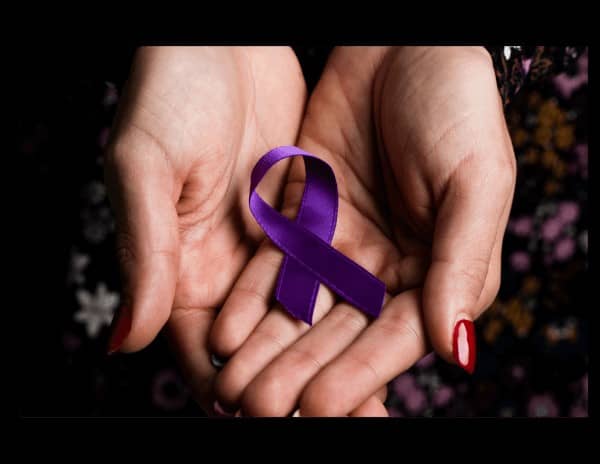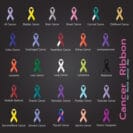Domestic violence often lurks behind closed doors and can affect individuals and families from all walks of life. We often hear about professional athletes and others in the public eye committing domestic violence. Unfortunately, the abuse doesn’t stop with public figures; countless young and old individuals suffer in silence.
This overview seeks to shed some light on the complex nature of this problem and serve as a guiding light toward raising awareness, ultimately creating safer, more compassionate homes and communities.
What Is Domestic Violence?
 Domestic violence is a severe social issue that can be long-lasting and includes physical, emotional, and psychological consequences for victims.
Domestic violence is a severe social issue that can be long-lasting and includes physical, emotional, and psychological consequences for victims.
Typically, abusive behaviors occur within a domestic relationship where one seeks to gain power and control over their partner. The violence encompasses many associations, including married couples, dating partners, cohabiting couples, and within families.
The Cycle of Violence
Violence often occurs in a cycle, with periods of tension building, an acute incident of violence, followed by a period of reconciliation and calm before the cycle repeats.
Tension-Building Phase: This phase escalates tension, emotional volatility, and a sense of walking on eggshells.
Abusive Episode: The tension reaches a breaking point, leading to acts of abuse, which can be physical, emotional, or sexual.
Reconciliation Phase: After the abusive episode, there is often a reconciliation phase, with the perpetrator expressing remorse, apologies, and promises to change. This phase can create a sense of hope and confusion in the victim.
Types of Domestic Violence
As stated, domestic violence isn’t limited to physical harm alone. Recognizing the different forms is crucial to understanding the full scope of the issue. Here are some of the critical types of domestic violence:
 Physical Abuse: Most of us find physical abuse the most recognizable form of domestic violence. Physical abuse is deliberately aggressive or violent behavior by one person toward a partner or family member that results in bodily injury. It includes hitting, slapping, punching, kicking, choking, and other forms of physical violence.
Physical Abuse: Most of us find physical abuse the most recognizable form of domestic violence. Physical abuse is deliberately aggressive or violent behavior by one person toward a partner or family member that results in bodily injury. It includes hitting, slapping, punching, kicking, choking, and other forms of physical violence.
Verbal Abuse: By nature, verbal abuse mainly involves using words and language to control, hurt, intimidate, or manipulate the victim. It includes shouting, yelling, name-calling, and threats.
Verbal abuse tends to focus more on the immediate expression of anger, frustration, or control. Verbal abuse is not always intended to undermine the victim’s self-esteem or self-worth. Still, it can be more about asserting power in the moment.
 Emotional Abuse: Emotional abuse is a broader category encompassing various forms of psychological manipulation and control targeting a victim’s emotions and mental well-being.
Emotional Abuse: Emotional abuse is a broader category encompassing various forms of psychological manipulation and control targeting a victim’s emotions and mental well-being.
Emotional abuse can take many forms, including insults, constant criticism, humiliation, degradation, and belittlement. Often referred to as gaslighting, an individual’s reality can become distorted as they internalize the abuse as their personal failings.
Emotional abuse has a more profound and lasting impact on the victim’s mental and emotional health. People who suffer emotional abuse regularly experience confusion, fear, difficulty concentrating, low confidence, nightmares, aches, and a racing heart. Long-term repercussions may include anxiety, insomnia, and social withdrawal.
For more information, visit: psychologytoday.com
Sexual Abuse: Offenders who physically abuse their intimate partners are often sexually abusive as well. Sexual abuse within domestic violence includes any non-consensual sexual activity or coercion that involves rape, sexual assault, forcing sexual acts, or any sexual contact without the victim’s consent.
As noted by ncadv.org, “Victims who are both physically and sexually abused are more likely to be injured or killed than victims who experience one form of abuse. Abusers assault people of all genders, races, ages, social classes, and ethnicities. Women who are disabled, pregnant, or attempting to leave their abusers are at greatest risk for intimate partner rape.”
Financial Abuse: Financial abuse often occurs within physically abusive relationships and is a form of domestic violence where the abuser controls the victim’s financial resources.
Financial abuse can involve limiting access to money, controlling the victim’s income, preventing them from working, or forcing them to turn over their earnings.
Abusers might accumulate debt in the victim’s name, often without their knowledge or consent. The victim is left responsible for the financial obligations, further trapping them in the relationship.
In addition, financial isolation reduces the victim’s ability to escape the abusive relationship. Another form of abuse is elderly financial abuse. It happens when a relative, friend, or caregiver steals money from an older person.
For more information, visit: womenshealth.gov
 Isolation: Isolation is a common tactic used in the context of domestic violence. Using isolation is a form of emotional and psychological abuse that can leave the victim feeling trapped and entirely dependent on the abuser for social interaction and support, undermining the victim’s self-esteem.
Isolation: Isolation is a common tactic used in the context of domestic violence. Using isolation is a form of emotional and psychological abuse that can leave the victim feeling trapped and entirely dependent on the abuser for social interaction and support, undermining the victim’s self-esteem.
Usually, the isolation begins with the abuser inserting emotional blocks between a victim and their family and friends. During isolation, the victim finds it too difficult to connect with friends and family due to the abuser’s embarrassing or obnoxious behavior or the victim’s belief that the abuser is telling the truth.
In some cases, abusers may physically confine or restrict the movement of their victims. Isolation could involve locking them in a room, preventing them from leaving the house, or controlling their access to transportation. Physical isolation can be a more extreme form of control, making it difficult for the victim to escape the abusive situation.
For more information, visit: healthyplace.com
Stalking: If you’re not aware, stalking is a form of domestic violence that is a pattern of invasive and unwanted behaviors that can involve surveillance, intimidation, and harassment. Stalkers may use technology, in person, or other means to monitor and track their victims, causing them considerable distress.
According to SPARC (Stalking Prevention, Awareness, & Resource Center), “There is a real and frighteningly significant connection between stalking and intimate partner violence. Stalking often co-occurs with intimate partner violence and can indicate other forms of violence. Stalking can be a way to exert power and control during and after an abusive relationship”.
Digital or Online Abuse: Digital or online abuse is a form of domestic violence. With the increase in technology, abusers may use digital means to harass, control, or harm their victims. The abuse can include cyberbullying, hacking into the victim’s accounts, or using social media to embarrass or threaten them.
Conclusion
Understanding these various forms of domestic violence is crucial because it highlights that abuse is not always physical, and victims can experience severe harm even without visible injuries. It also underscores the need for a comprehensive approach to addressing domestic violence, which includes providing support, resources, and legal protections for victims while holding perpetrators accountable for their actions.
If you are a victim of domestic violence, there are resources available to you. The National Domestic Violence Hotline (The Hotline) is available for anyone experiencing domestic violence, seeking resources or information, or questioning unhealthy aspects of their relationship.
Hotline: 1 (800) 799 – 7233
Available 24 hours a day, 7 days a week via phone and online chat.




